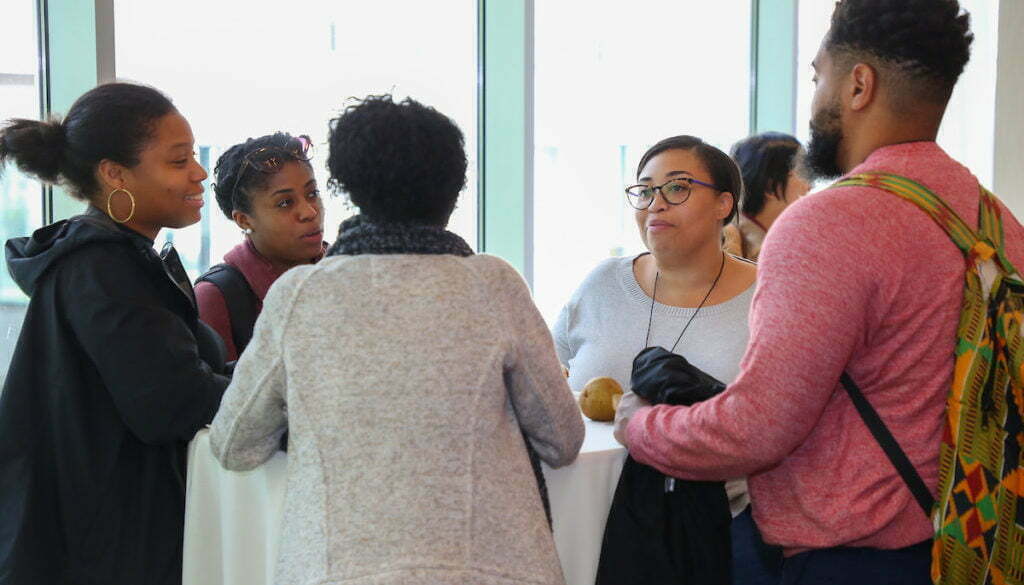Conference Report: Structural Racism in Population Health Research and Policy
Brittney Francis, Brigette Davis, Rebekah Cross, Samuel Baxter, Hawi TeizazuRacism has increasingly been examined as a determinant of health for racial and ethnic minoritized communities. Although much of the research in this area has focused on interpersonal racism and discrimination, there is growing interest among population health researchers in understanding how racism as a social structure shapes health and well-being.
As five doctoral students examining structural racism in our research, we found ourselves discussing the needs, challenges, and opportunities to empirically document the adverse health effects of structural racism and how to use our research to inform communities and policymakers to combat it. As Robert Wood Johnson Foundation Health Policy Research Scholars, we are trained in applying research to influence policies that impact population health to equitably build a Culture of Health. Together, our research interests and training offer a unique lens to understanding, measuring, documenting, and disrupting structural racism while centering policy. At the 2019 IAPHS Conference, we collectively presented our critical analysis in a session entitled, An Adjusted Lens: An Examination of Structural Racism in Population Health Research and Policy.
This panel addressed four critical questions:
- How is structural racism conceptualized across disciplines?
- How do inter-institutional relationships impact health?
- What measures are currently being used and how can we build on that?
- How can we address structural racism through policy?
To answer these, we explored literature in sociology, law, education, public health, history, urban planning, and health policy. Drawing on these diverse disciplines, to critically engage with current work on structural racism in population health research, our presentation conceptually defined structural racism as: “The macrolevel systems, social forces, institutions, ideologies, and processes that interact with one another to generate and reinforce inequalities among racial and ethnic groups” (Gee & Ford, 2011).
Opening the panel, Rebekah Israel Cross spoke about the distinct levels of racism, differences between institutional and structural racism, criteria for structural racism, the importance of understanding the dimensions of social structure, and the need to identify specific leverage points to enact structural change. Hawi Teizazu presented the current state of the limited literature examining the relationship between structural racism and population health outcomes, the various pathways structural racism impacts health, the role of population health researchers in reinforcing systems of structural racism, and the need to explore intersectionality in relation to how various communities experience structural racism. Brittney Butler discussed the current measures identified as structural racism measures and limitations of these existing measures. She also discussed the interconnectedness of the multiple mechanisms through which structural racism operates (for example, housing and incarceration), and the importance of community engagement and qualitative methods when developing measures of structural racism. Samuel Baxter spoke about the role of policy in maintaining structural racism and health inequities, why we need to understand the active role of historical policy, and what researchers can do to show the direct health impacts of all policies. Brigette Davis led a meaningful discussion on whether consensus on the conceptualization of structural racism in population health research is needed in order to truly show its impact on health, and she also discussed the need to further examine structural racism in non-Black communities of color.
Our panel presentation and discussion also directly spoke to two points made during the conference’s opening. In her presidential address, Ana Diez-Roux called for scientists to push our inquiry beyond the limitations of existing measures, and explore how our work can inform new measures. During the invited panel that followed, Bruce Link urged scholars and policymakers to turn their attention to structures of power and privilege to better understand health inequities.
We hope that our panel is a launching point for population health researchers to build interdisciplinary teams who explore and interrogate structural racism in their research in order to inform policies and structures that continue to harm racially marginalized and minoritized communities in this country.
In case you missed our session, it was recorded! But we also wanted to provide some of the resources used for this panel to further your understanding of structural racism:
Rethinking Racism: Toward a Structural Interpretation
Structural Racism and Health Inequities- Old Issues, New Directions
The Race Discrimination System
A Theory of Structure: Duality, Agency, and Transformation
Measuring inequity: a systematic review of methods used to quantify structural racism










All comments will be reviewed and posted if substantive and of general interest to IAPHS readers.